Lecture 50: glucose homeostasis and the pancreas
1/30
There's no tags or description
Looks like no tags are added yet.
Name | Mastery | Learn | Test | Matching | Spaced |
|---|
No study sessions yet.
31 Terms
the endocrine role of the pancreas is to maintain glucose at 4.5-5.5 mM for enough energy
too low can cause a coma, the brain is dependent on glucose
the pancreas has a 1% endocrine function, rest is exocrine(digestive enz into deoudenum), has Islets which are alpha and beta cells
changes in blood glucose occur when eating or when sleeping(semifasted state)
out of homeostasis can cause type 1 and 2 diabetes and gestational diabetes (pregnancy)
type 1: autoimmune, antibodies destroy pancreas
type 2: insulin resistant
when eating: due to carbs, glucose increases to 8 mM, it circulates and is then detected by beta cells which respond by releasing insulin
sleep: BG levels drop to 3 mM, this is sensed by alpha cells which produce glucagon. glucagon raises BG levels by breaking down glycogen(increases glycogenolysis and gluconeogenesis)
returns back to 4.5
insulin is anabolic(excess), glucagon is catabolic so these 2 hormones can show paracrine activity(insulin inhibits glucagon vise versa)
what happens during the absorptive state(fed)?
absorption of nutrients(carbs, proteins and fats)
insulin regulates the metabolism of all components
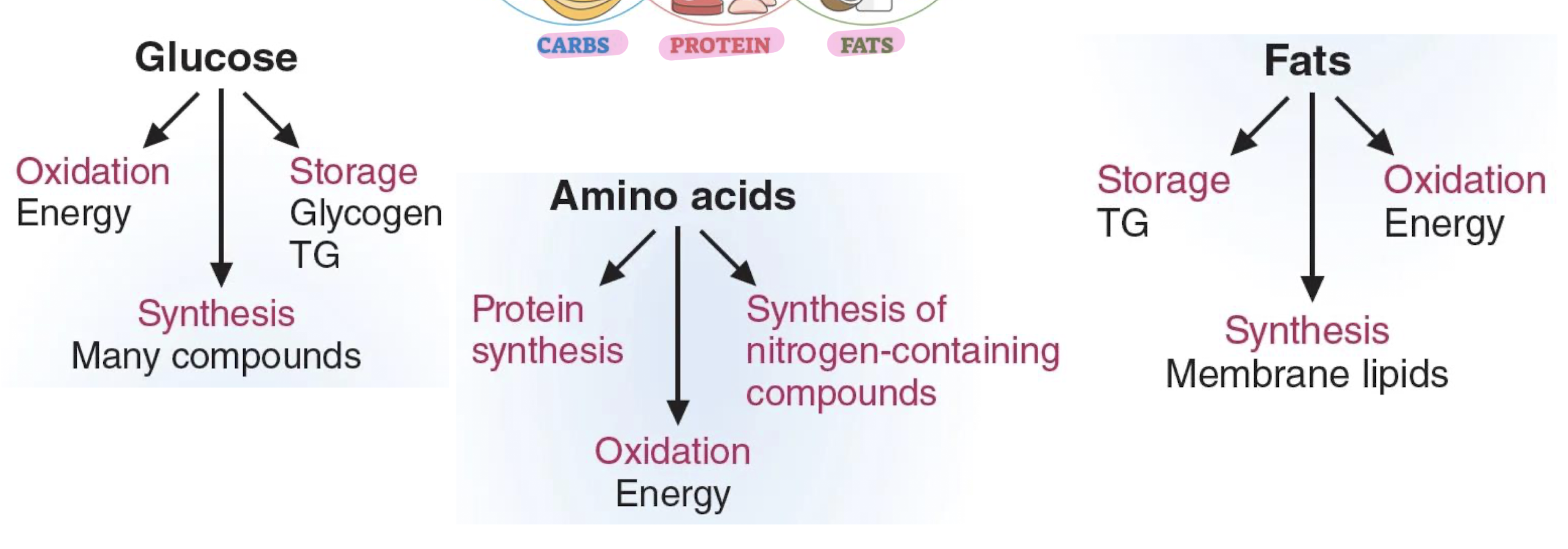
what are the features of the pancreas?
has exocrine, digestive enzymes into the duodenum
endocrine function is from the islets of langerhan cells
islet cells have paracrine(signalling of neighbouring cells on each other) and endocrine function
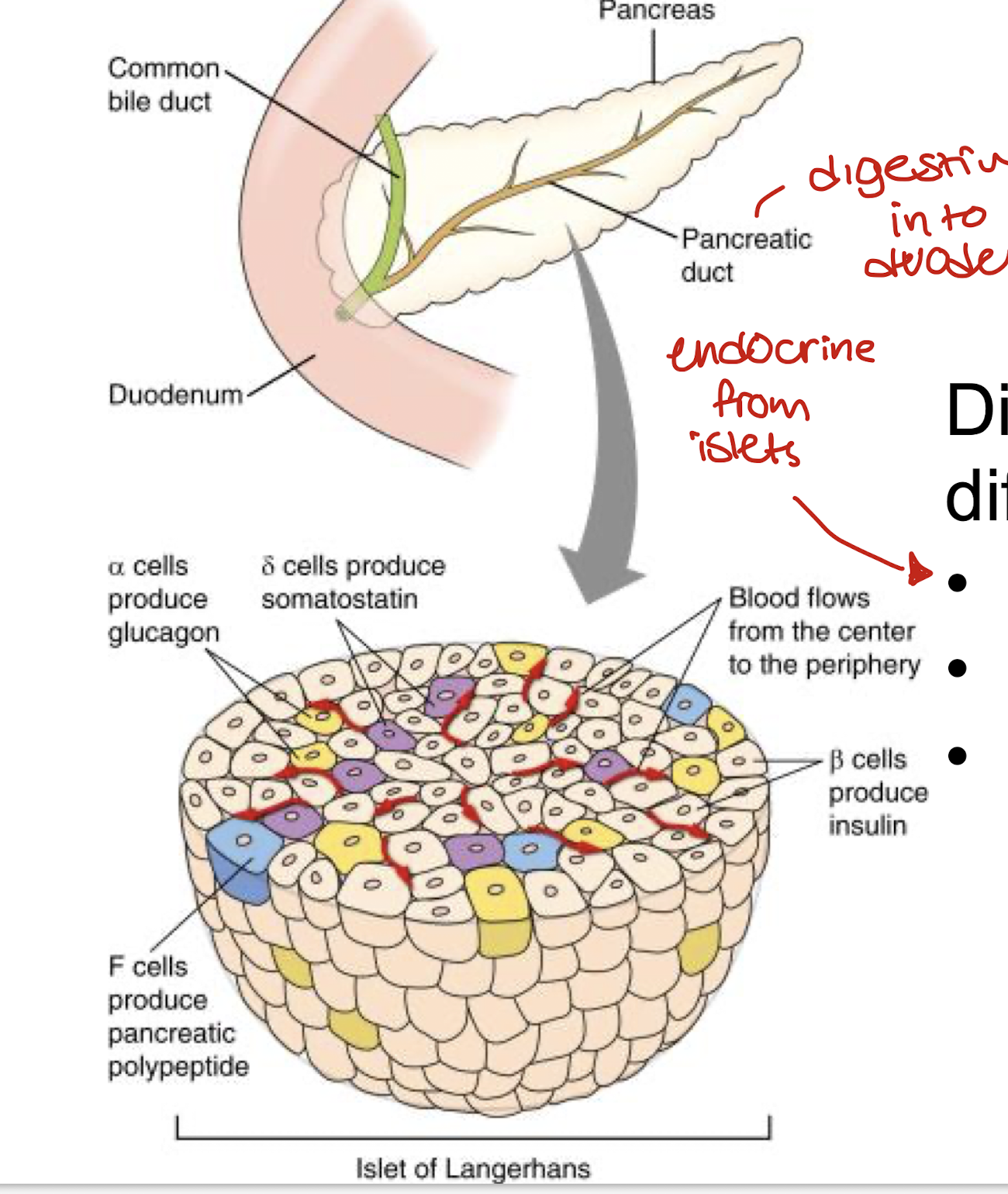
what are the different cell types and what hormones do they secrete in the pancreas?
alpha cells secret glucagon
beta cells secrete insulin (most common)
delta cells secrete somatostatin(suppresses the release of insulin and glucagon)
how does insulin affect the glucose balance?
promotes uptake of glucose into muscle
promotes uptake of AA into muscle
promotes uptake of glucose into liver to increase glycogen store
promotes glucose uptake into fatty tissue
it decreases plasma glucose, AA, FFAs and is considered anabolic
how does glucagon affect the glucose balance?
watch
it increases plasma glucose, ketones and is considered catabolic
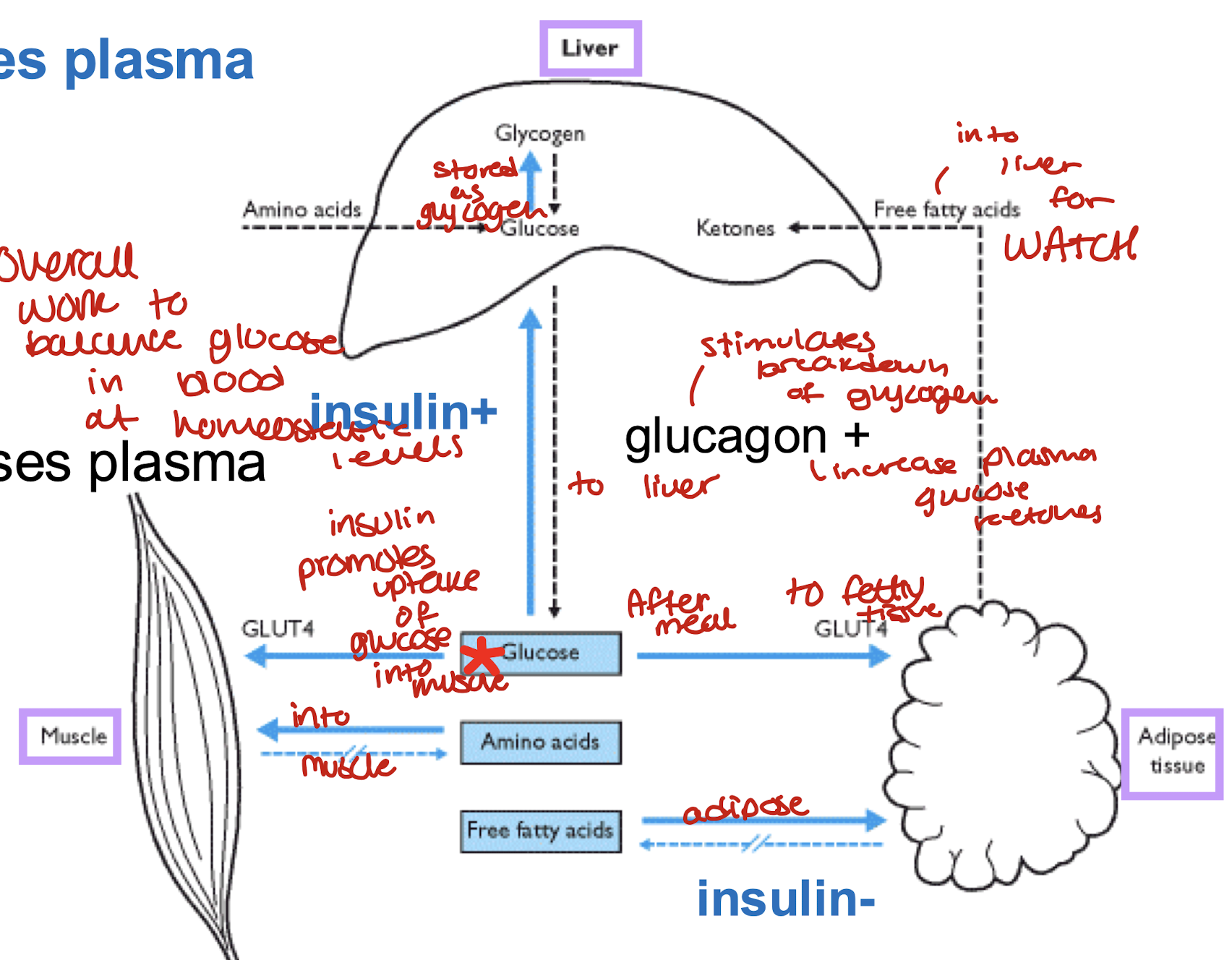
what is the structure of insulin?
protein hormone
sequence of AA made in pancreatic beta cells
WATCH
how is insulin secreted in response to changes in glucose
an increase in glucose causes it to move into pancreatic beta cells
glucose is converted to glucose-6-phosphate which traps the glucose
it undergoes glycolysis in the mitochondria to make ATP
this increases the ATP/ADP ratio
an increase in ATP causes the K+ channels to close meaning K+ cant leave and stays inside
+ charged therefore leads to depolarisation which causes VGCC to open and calcium moves in
this causes vesicles with insulin to fuse with the beta cell membrane and release insulin to blood
what is used as a target for type 2 diabetes drugs?
ATP sensitive K+ channels
the drugs close channels to trigger insulin release
how do plasma insulin concentrations change over time and what are its features?
they:
increase during the absorptive state
decrease during postabsorptive state
they are secreted via exocytosis from Beta islet cells in response to high levels of glucose
to induce its effects insulin needs to bind to specific receptors on membrane of target cell
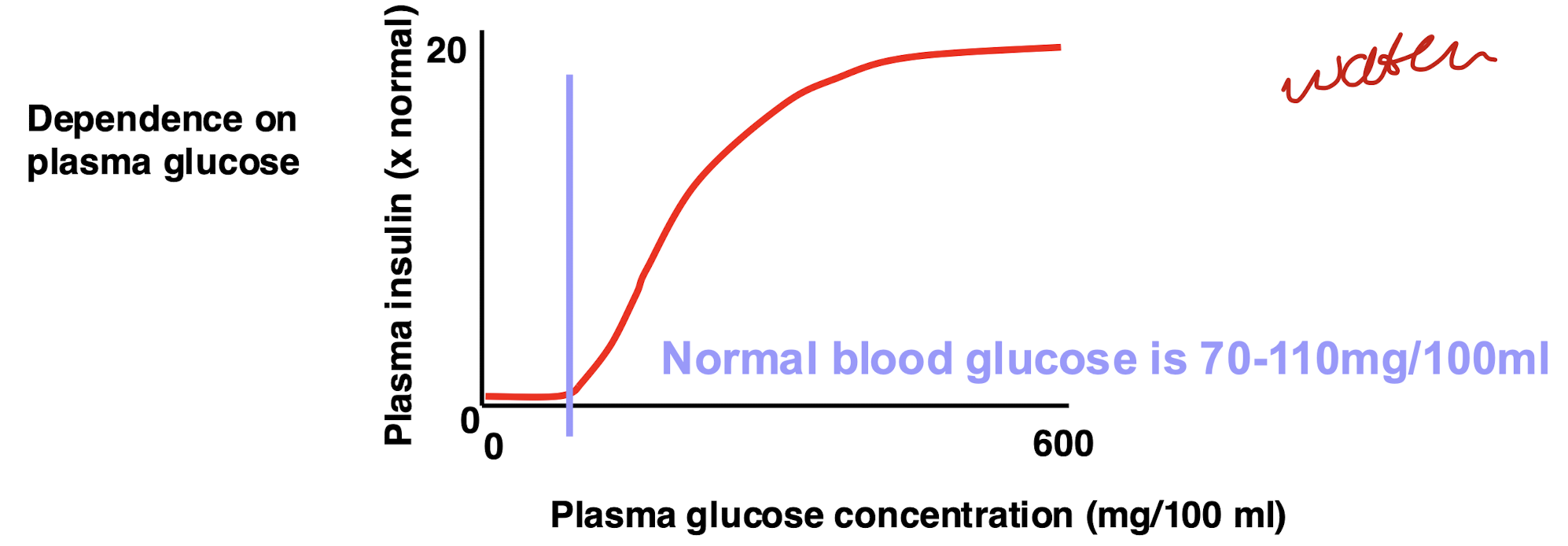
what are the features of the insulin receptor?
made up of alpha and beta subunits which are joined by disulfide bridges
the receptors undergoes dimerization when insulin binds to it
receptor tyrosine kinase undergoes autophosphorylation
effects on intracellular kinases/phosphatases
effects on key enzymes
WATCH
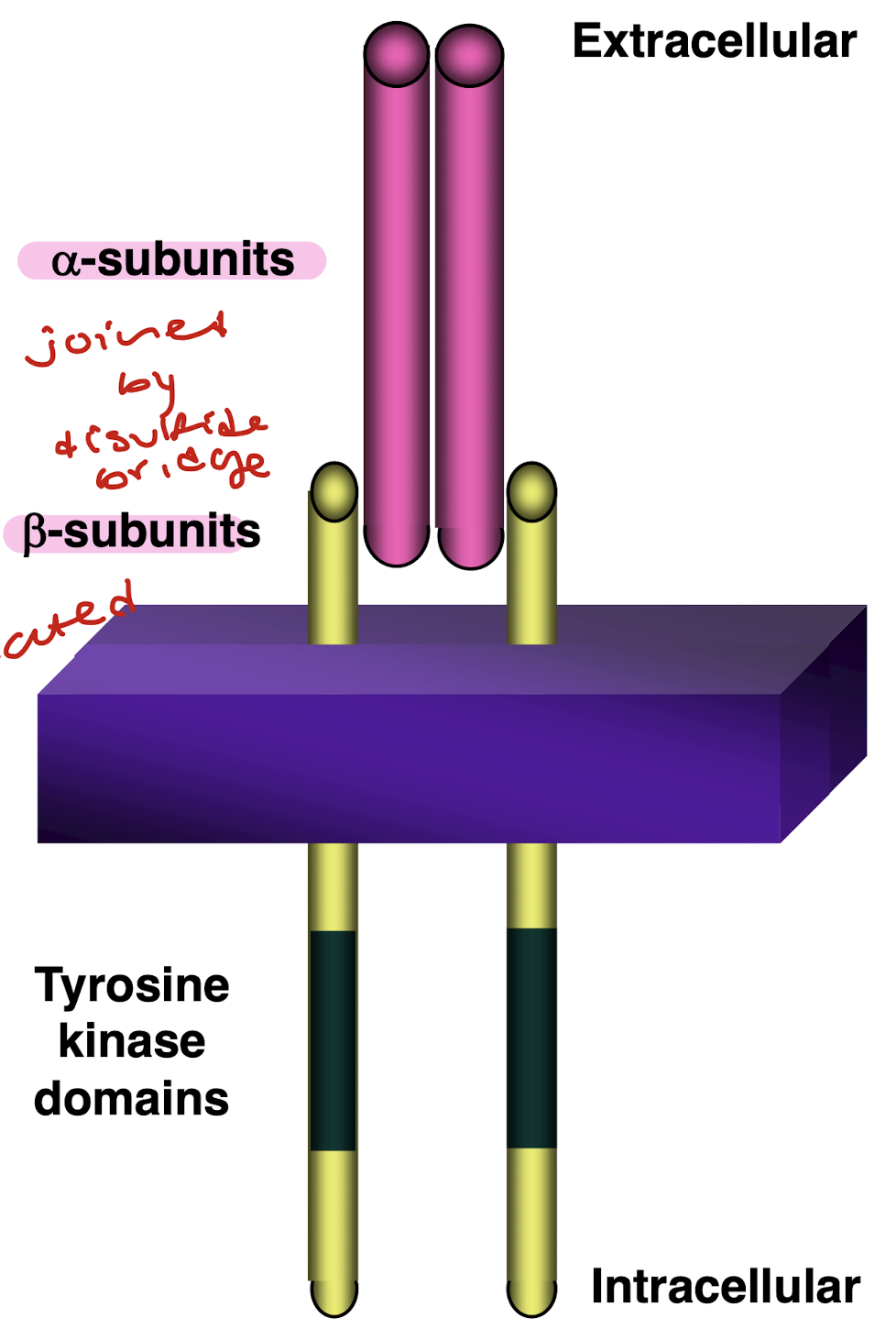
how does insulin respond to carbohydrate metabolism?
facilitates glucose entry into muscle and adipose(GLUT-glucose transporter proteins)
stimulates the liver to store glucose as glycogen
decreases conc of glucose in the blood
how does insulin respond to lipid metabolism?
promotes synthesis of fatty acids in the liver(when glycogen saturated) leading to an increase in lipoproteins in circulation to release FAs(triglyceride synthesis in adipocytes)
inhibits breakdown of fat in adipose tissue
promotes glycerol synthesis from glucose and increase triglyceride synthesis
how does insulin stimulate muscle glucose uptake?
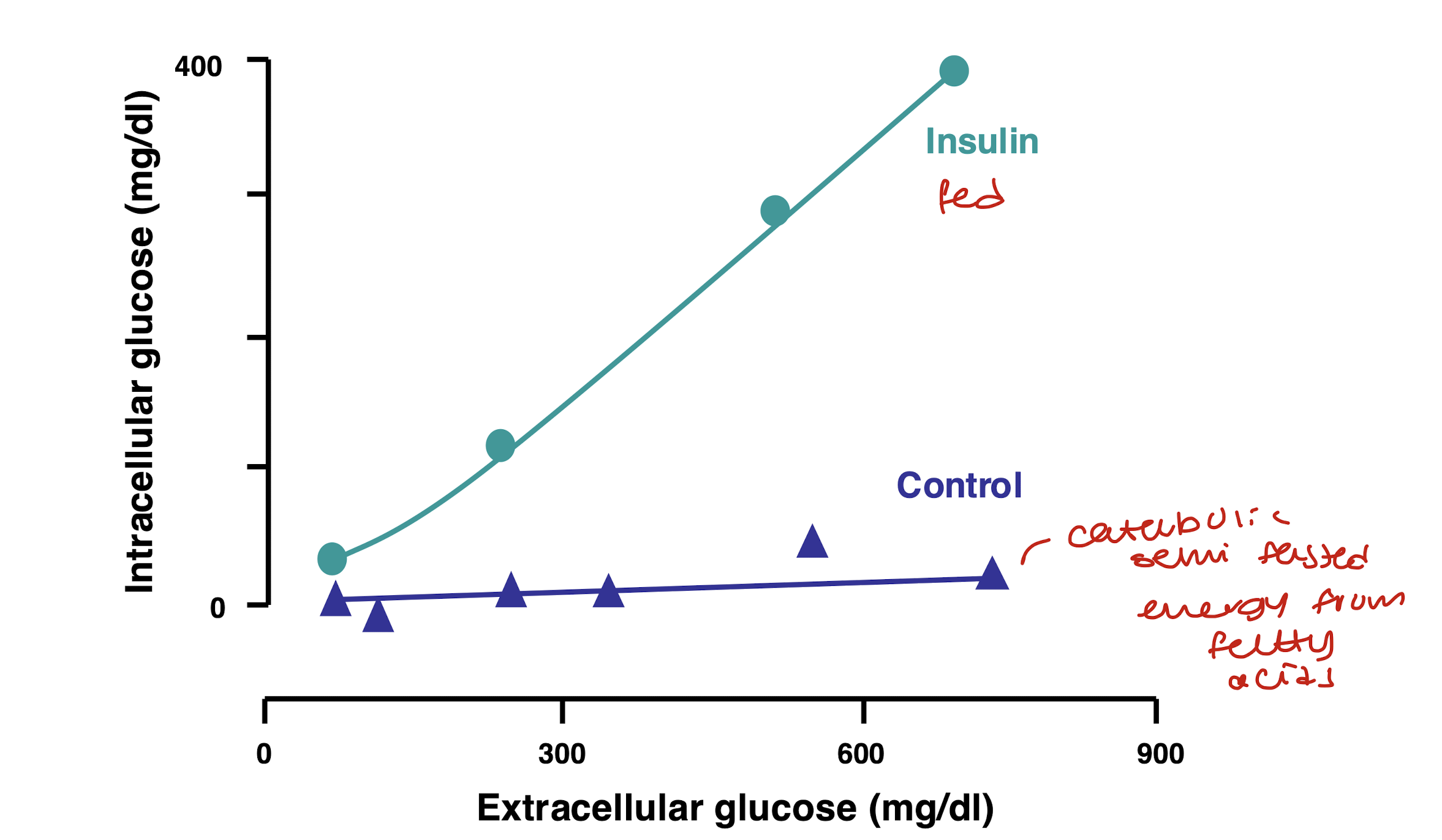
how does insulin stimulate glucose uptake?
at a basal level of uptake, there are glucose transporters on the membrane and also some synthesised and ready for surface in the storage microsome
a rise in the extracellular glucose causes insuline to be released
insulin binds to insulin RTK which stimulates increase in expression of glucose transporters on the surface to take in more glucose
insulin-sensitizing drugs increase glucose uptake
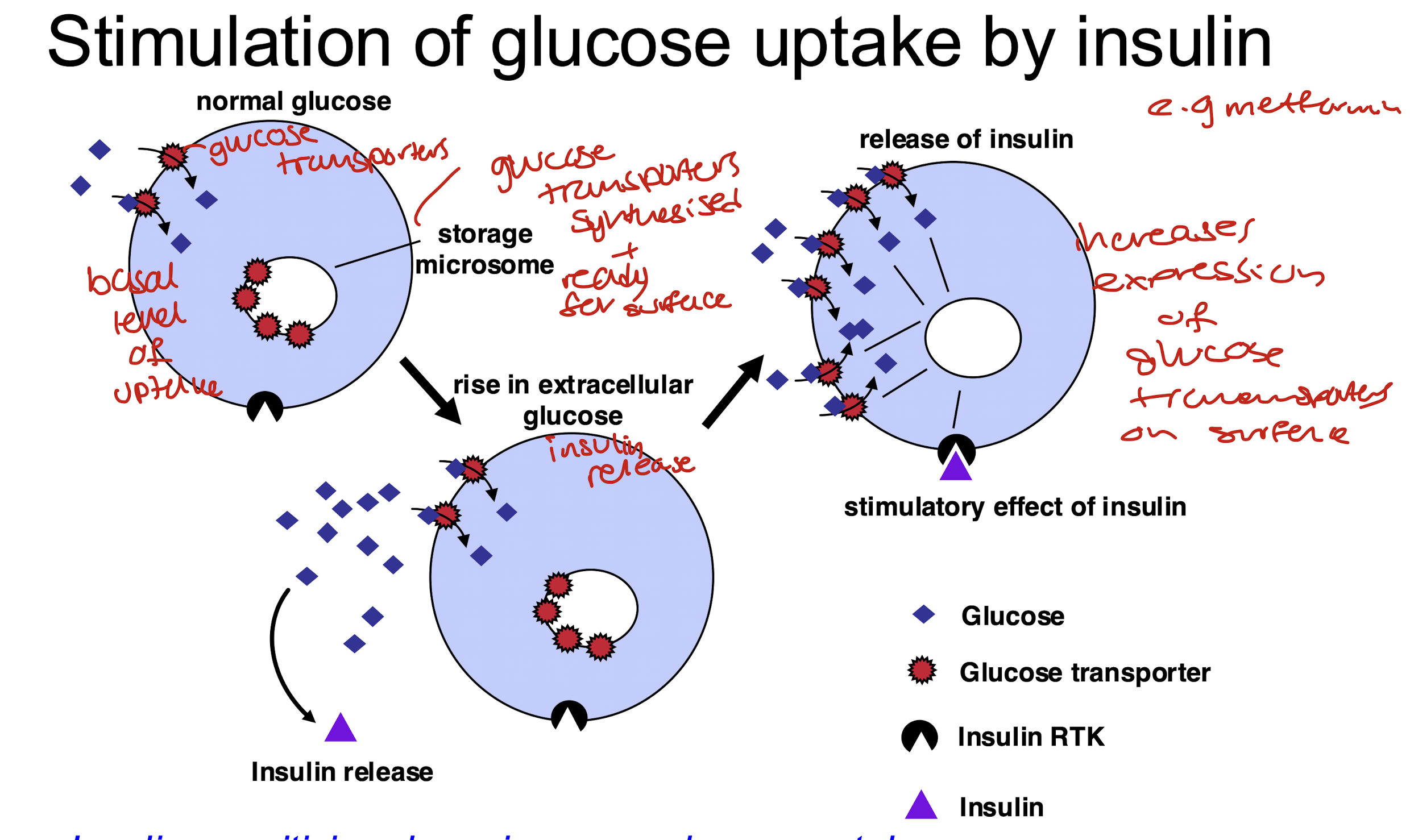
How does insulin affect muscle?
glucose uptake is stimulated by insulin
glucose is transformed to glucose-6-phosphate and then to glycogen
some of the glucose is mtebolised to lactic acid which releases energy
the lactic acid is taken to the liver
amino acid uptake is stimulated by insulin
this increases protein synthesis in muscle which creates structural proteins
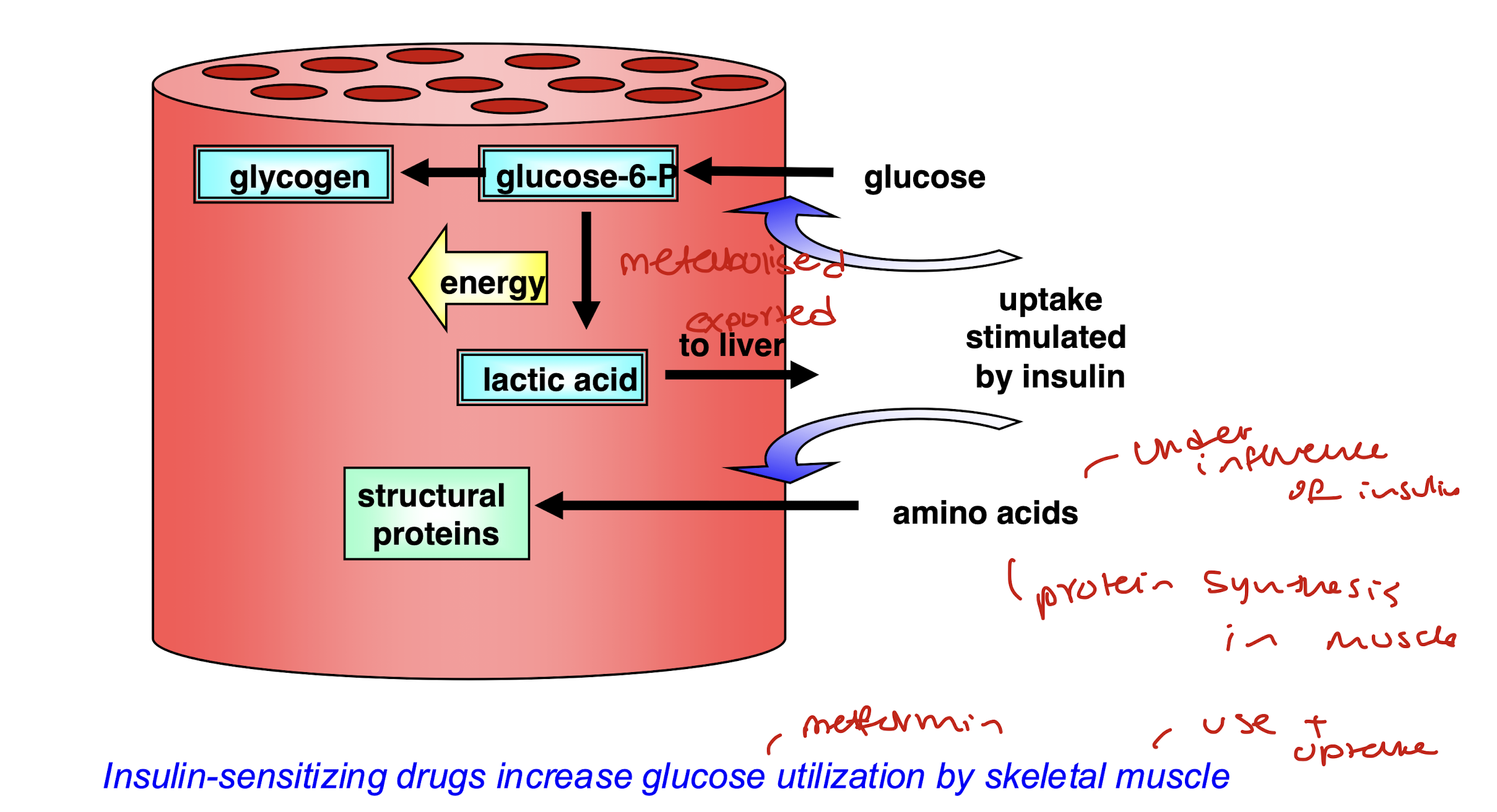
how does insulin affect the liver?
WATCH
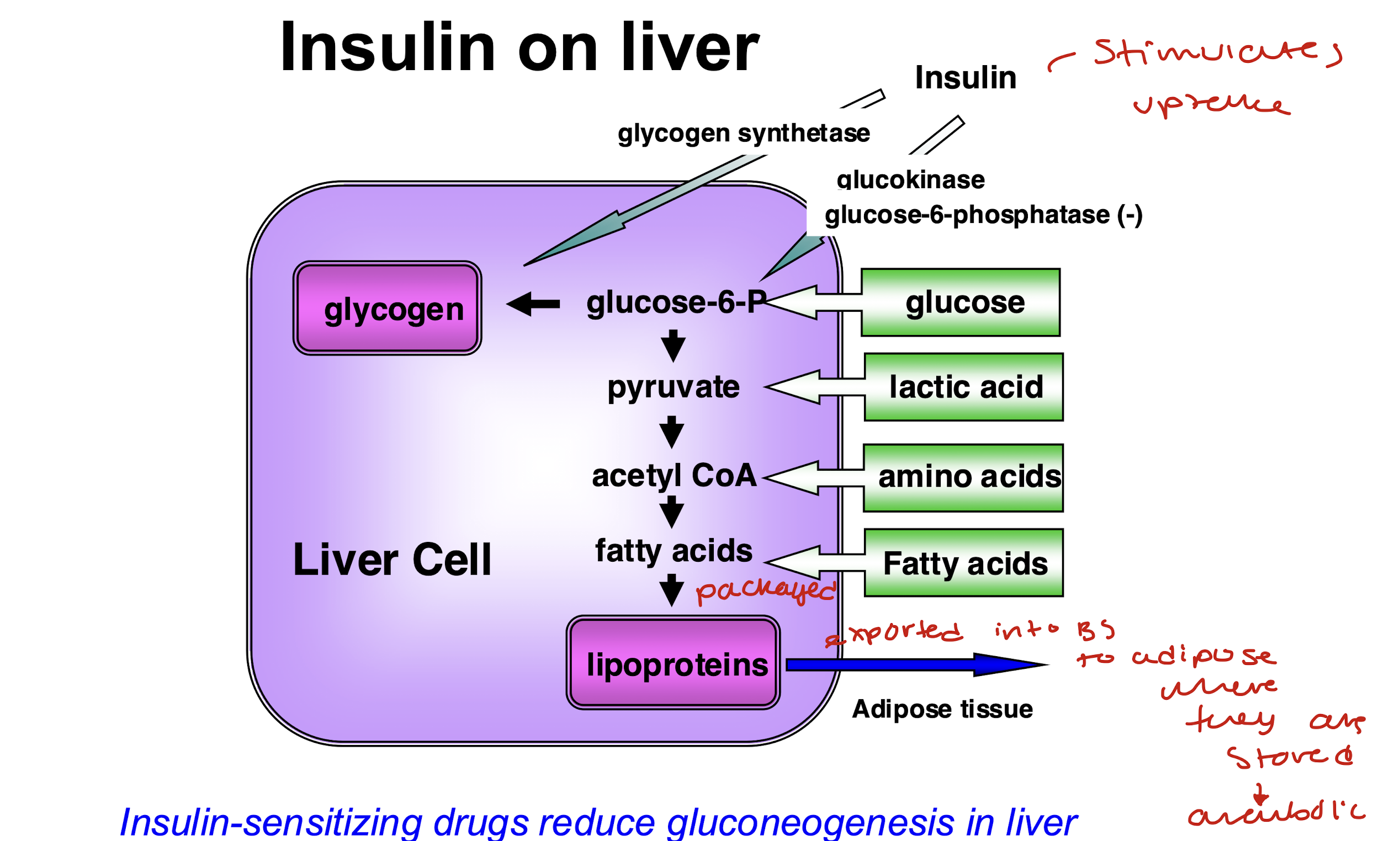
how does insulin affect adipose tissues
watch
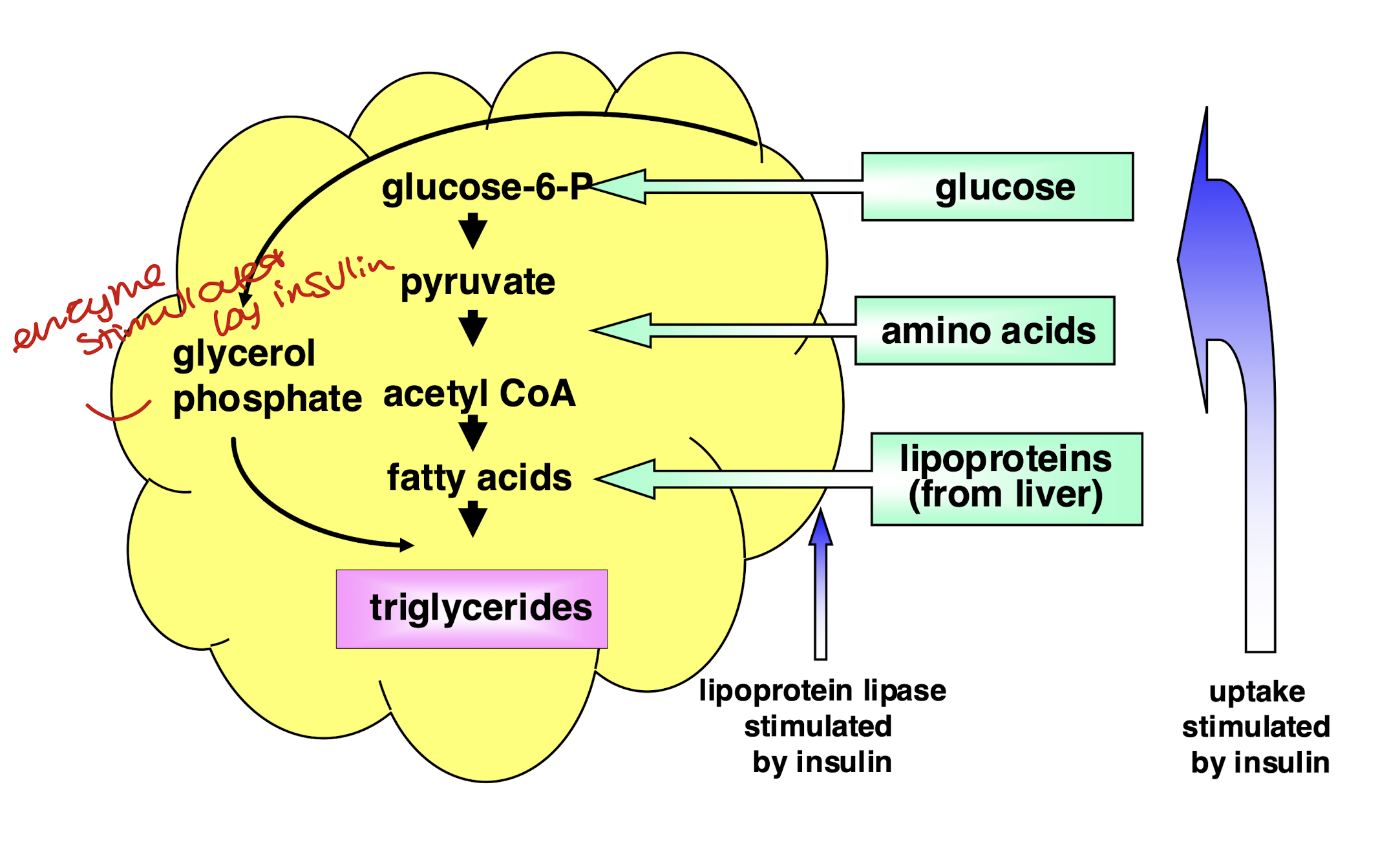
insulin and blood glucose diagram:
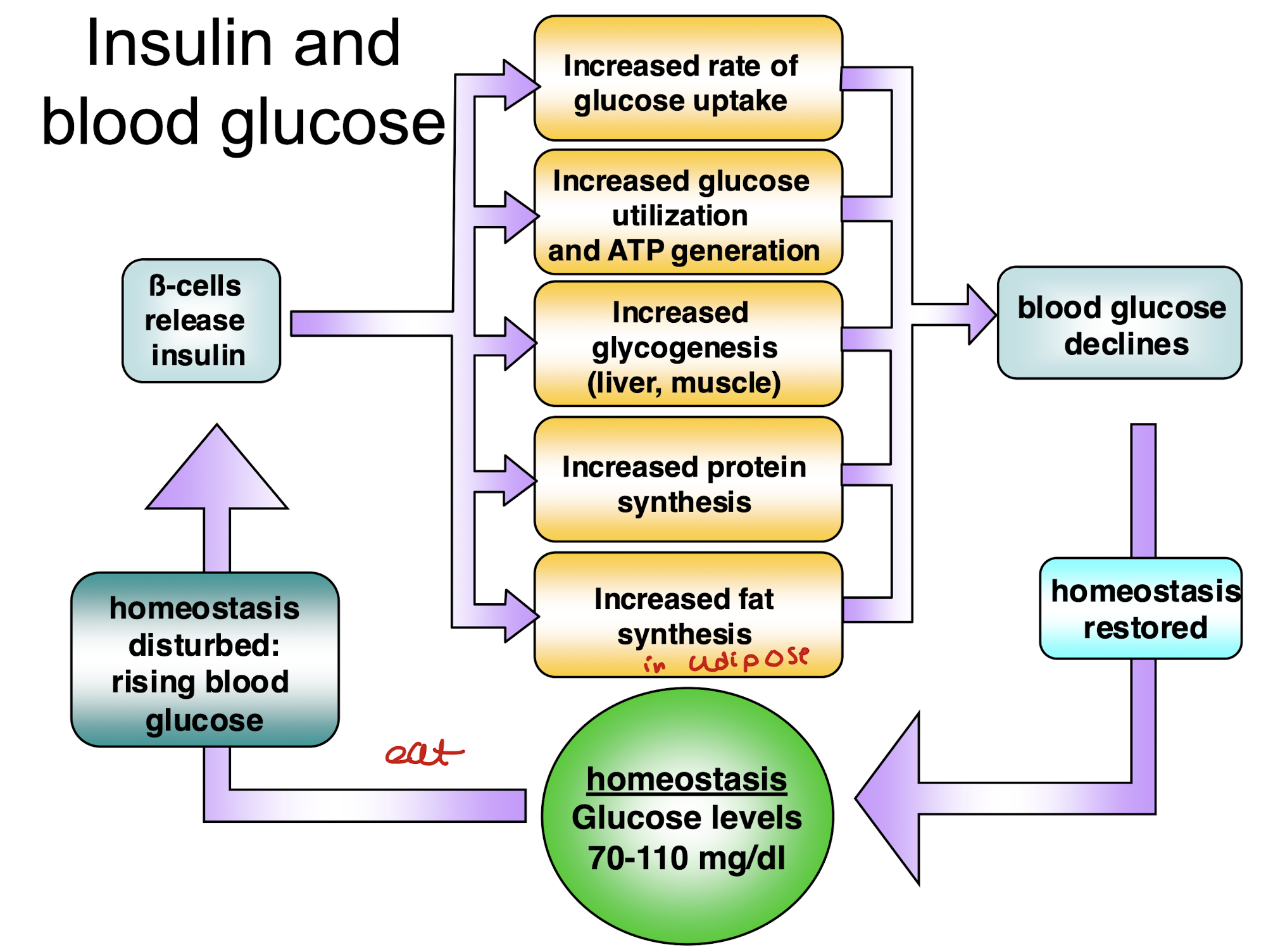
what are the features of glucagon and what does it do?
alpha cells of islets synthasize and release glucagon
its a peptide hormone(29 AA) and is released when blood glucose falls
its the counter regulatory hormone to insulin
stimulates glycogenolysis
promotes gluconeogenesis
increases breakdown of fats
CATABOLIC
what happens to the levels of plasma glucose on glucagon release?
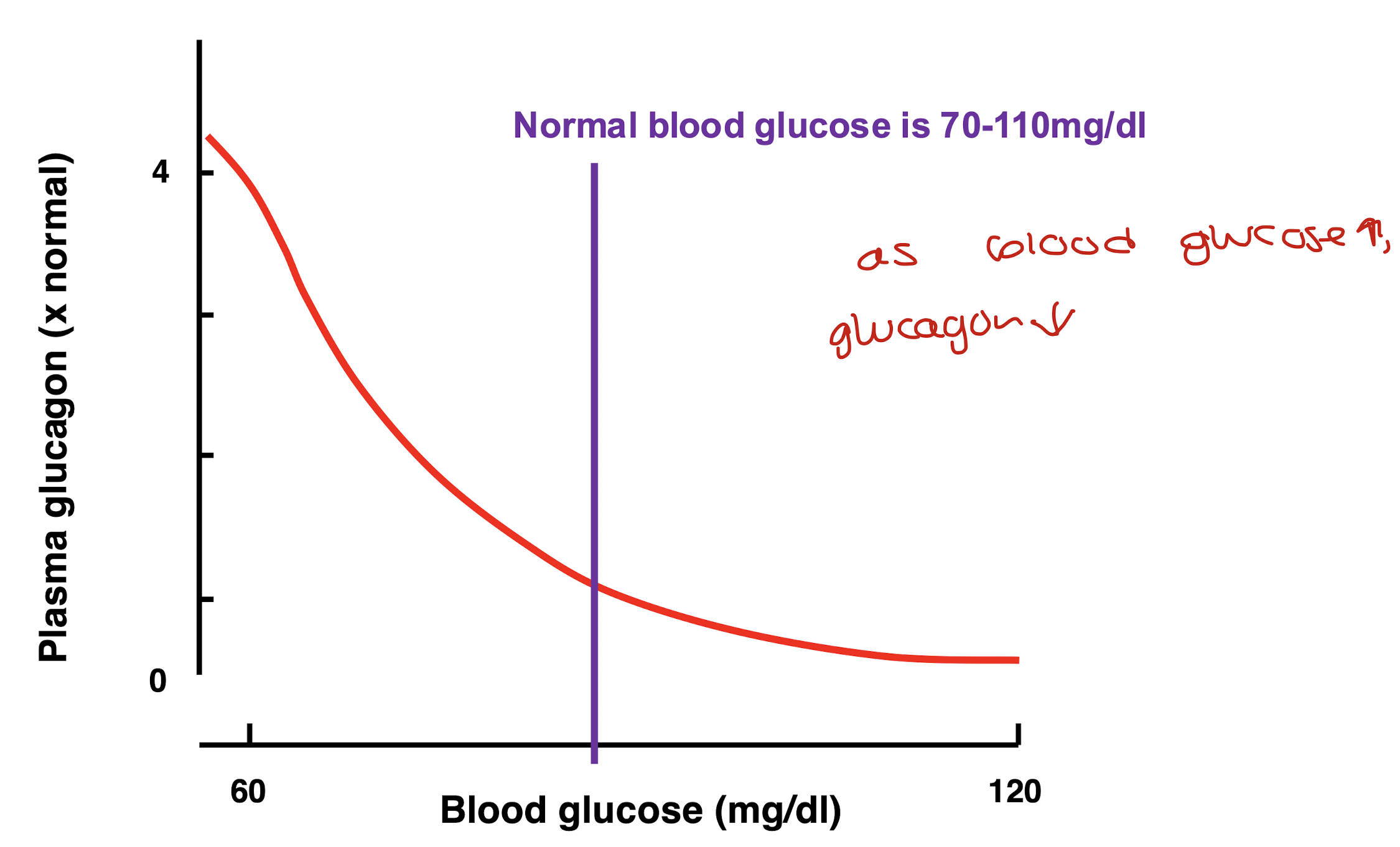
glucagon and blood glucose diagram:
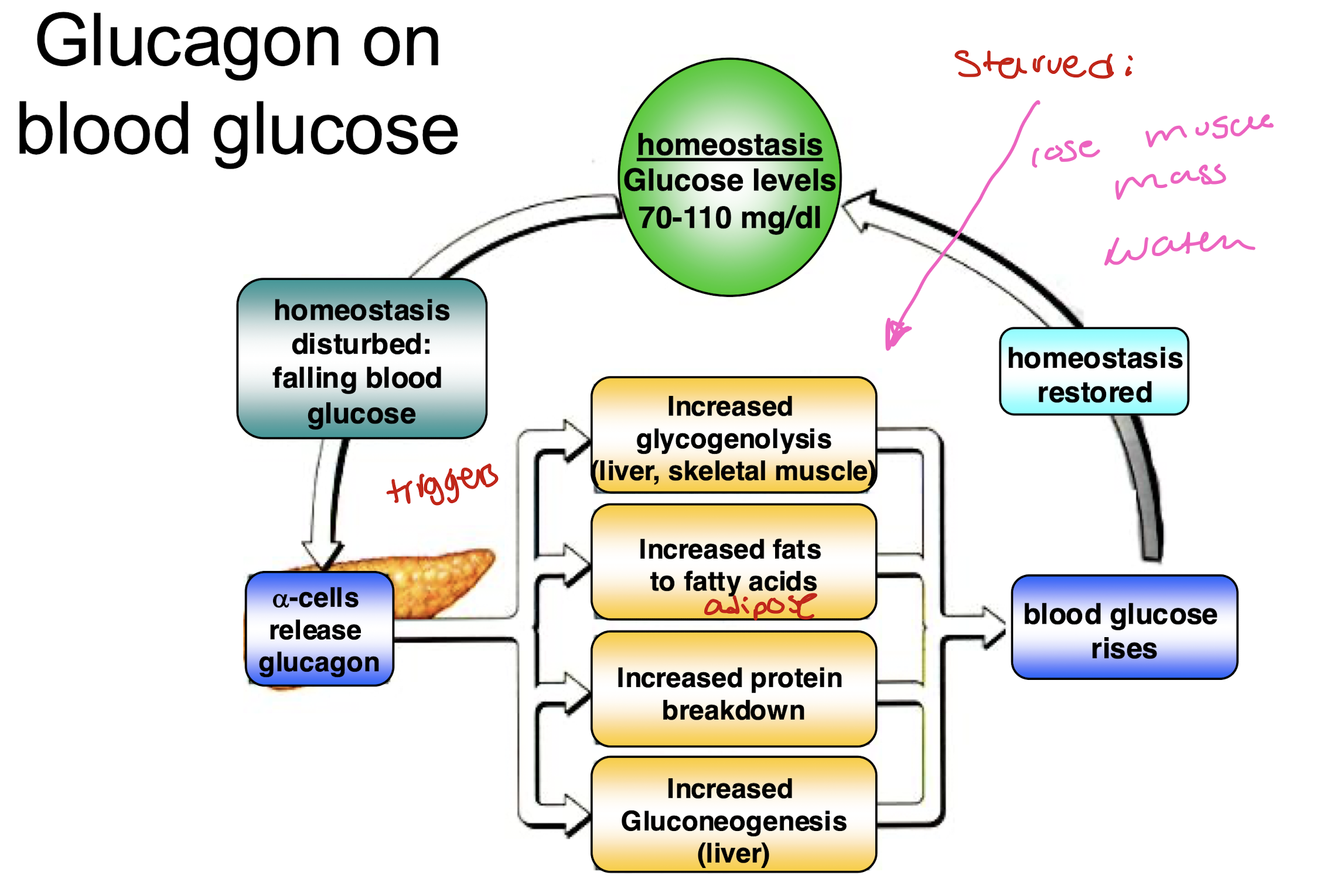

what is hypoglycaemia?
too little BG in the blood
less than 3 mM
the uptake of glucose by glucose dependent tissue is not adequate to maintain tissue function
highly likely to happen due to drugs
what does hypoglycaemia do?
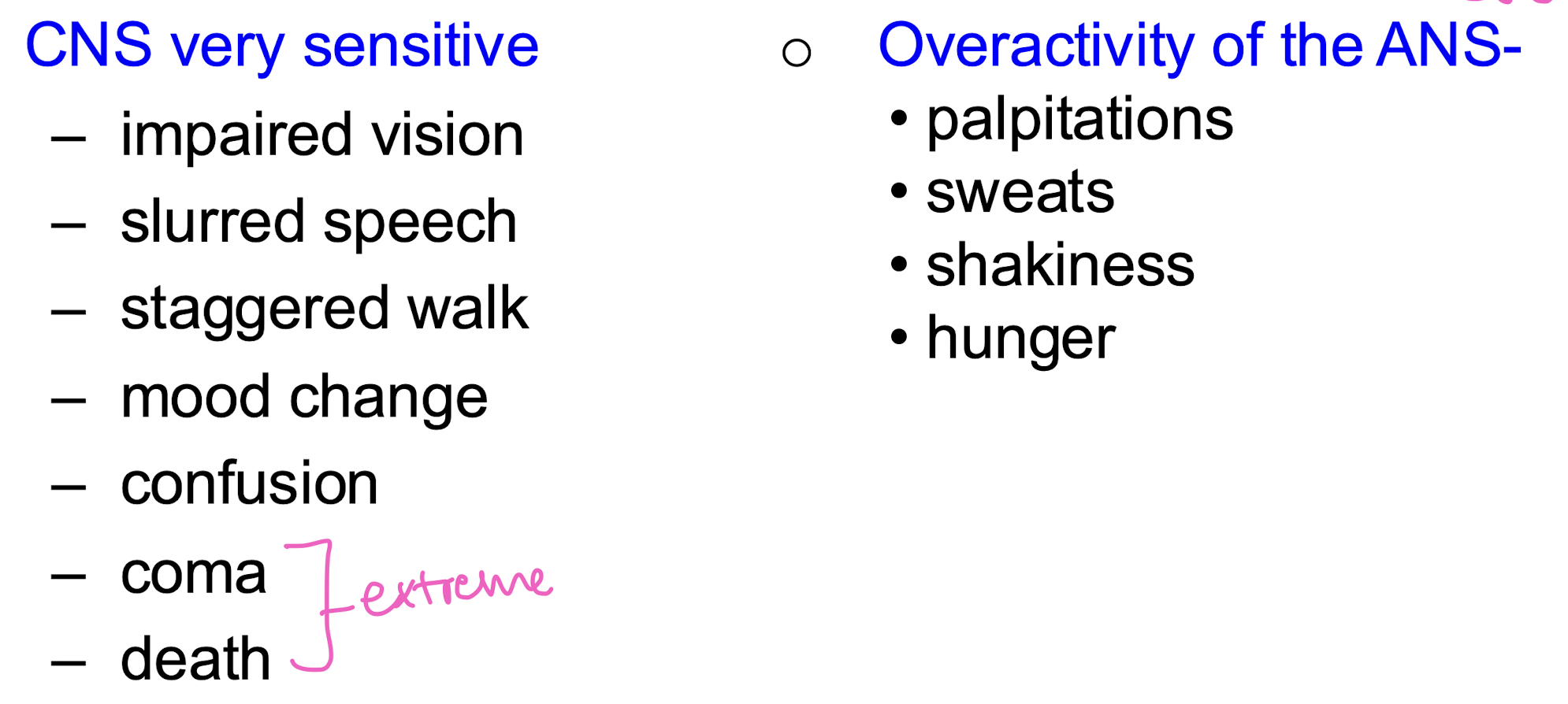
what is diabetes mellitus?
characterised by hyperglycaemia where fastedd blood glucose is greater than 7 mmol/L
what are the features of type 1 diabetes?
risk factors: family history, genetics, infection
appears suddenly
incurable, insulin dependent
(10%)
what are the features of type 2 diabetes?
risk factors: body weight, inactivity, family history, age
can go undiagnosed and unnoticed for years (slow), dangerous as can cause serious problems
diet and lifestyle changes can help, medication too
what are the features of gestational diabetes?
associated with pregnancy, is transient(only for a short period of time)
serious risk to mother and child
increased risk of developing type 2 diabetes
what is a major risk factor of developing type 2 diabetes ?
obesity
lots of people have diabetes, epidemic?
affects eye sight, can cause kidney failure, amputations, strokes, heart attacks
what happens if theres excess glucose?
attach to proteins, starts to get thick and blocks up capillaries
affects kidneys, eyes, peripheral circulation